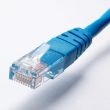How the $1 trillion infrastructure bill will deliver broadband expansion to reinvigorate local governments and citizen engagement
In our modern, digital world, internet access is now critical infrastructure. And any lack of internet access promises to hinder both citizens and local government, limiting possible community growth and potential. To deliver this now essential tool, a proposed $65 billion from the $1 trillion infrastructure bill has been allocated to expanding digital infrastructure and bringing broadband to millions of Americans.
Once more of the country has equal access to broadband internet, fewer communities will be left behind, and more people can equally enjoy the benefits of a modernized community. Expanding broadband encompasses more than simply providing underserved areas with useable connections, local governments also benefit from the arrival of digital infrastructure. With improved infrastructure, local governments will now have real opportunity to better engage with citizens, modernize the business of government, and pave the way to real growth.
Increased broadband connectivity: An opportunity for local governments
The COVID-19 pandemic changed our relationship with technology and local governments, how we engage with themand what we expect from each. Despite all the changes in 2020 and 2021, the digital divide remains, and the lack of access to stable and or useable internet at home is more apparent. Right now, most communities are at the mercy of internet service providers who have little interest in expanding service. The infrastructure bill, and the carve-out for broadband expansion, hopes to change this dynamic and ultimately modernize the country’s rural communities. And it is up to local governments to make the most of the opportunity. Increased broadband connectivity means local governments can adopt more sophisticated and flexible digital solutions and SAAS products to meet the unique needs of their communities. Ignoring this opportunity will leave potential growth on the table. The opportunity is there for the taking, but it is up to local governments to take advantage in ways that reinvigorate the community and engage residents.
How will the broadband expansion land? Big numbers aim for big change
The infrastructure bill is one of the most significant steps towards solving the connectivity gap affecting rural communities. Instead of continuing to push those who have never had useable internet further into the dark, this bill focuses on expansion and closing the digital divide. However, broadband expansion and the benefits that follow will not arrive overnight, and no two communities will follow the same plan. There will be a rollout timeline as infrastructure breaks ground and networks come online. It will be up to local governments to ensure the process is not stalled by potential roadblocks. Creating a plan of action and appropriate timeline is an important first step in securing access for local communities. For example, local governments can encourage connectivity by promoting and explaining broadband vouchers to citizens worried about paying for the new service.
And the effort will prove worth it. Expanding connectivity will deliver everyday benefits to communities and local governments across the country. Online options to pay bills, enroll in services, and engage directly with local leaders will drive efficiency, flexibility and community partnership.
Challenges and opportunities: How can local governments use expanded broadband services to digitally enhance citizen engagement?
This bill could enable one of the most extensive internet connectivity and accessibility growth opportunities of our time and promises to deeply impact generations to come and lessen the digital divide for millions. However, local governments cannot expect this opportunity to unfold on its own; just adding broadband to a community is not enough, and lasting change will require engagement from both sides.
Increasing broadband connectivity makes it easier and simpler for citizens to engage with local issues from home. Underserved communities often have a single source of information without internet access, but with more avenues to learn, more citizens will become active participants in local government. A lack of understanding and access are the most common barriers to better conversations, and expansion of digital infrastructure provides a path to solve both issues. Digital resources for citizens, such as local election information or volunteer opportunities, are a simple way to engage residents. Engaged citizens are commonly better informed and likely to vote, which will enact more change in the community.
Infrastructure is never the hottest or most attractive topic, but the broadband expansion will enact changes beyond simple infrastructure. Digitally connecting more parts of the country will create waves beyond letting more people on Twitter, and it is up to local governments to ensure the momentum of the rollout carries through to the community. Modernization reduces wasted resources, empowers citizens to learn more about their community, and attracts new residents to carry the local reinvigoration forward.
Andrea Facini is a senior executive currently serving as president at Active Network, a Global Payments company. Over the course of 25 years, Facini has helped both private equity owned and public companies of any size transforming the way they build their products, services and go-to-market strategy by focusing on value creation through the implementation of operating principles and best practices across nearly all functions of an organization. Facini holds a B.A. in Art History from the University of Fine Arts and Communication in Florence, Italy where he graduated Summa Cum Laude.




















